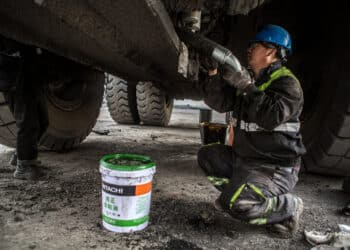Tech innovations transforming equipment finance operations
Equipment finance digital contracting up 7% YoY
Tech innovations are changing equipment finance by boosting efficiency and data visibility, despite rising uncertainty, faster economic cycles and data privacy concerns.
Digital transformation delivers immediate gains in ROI and efficiency while positioning firms for benefits including real-time asset tracking and improved contract visibility, as institutional investors tighten oversight and reevaluate processes amid market scrutiny, Matt Babcock, digital lending product strategist at Wolters Kluwer, told Equipment Finance News.
“Having a solution that’s flexible to adapt to whatever they deem to be best practice is going to be increasingly important to be able to access that liquidity,” he said. “That’s ultimately going to be really important to driving originations.”
Uncertainty and challenges such as the government shutdown, tariffs and shifting regulatory rules have reduced economic cycles that used to last 10 years to as short as 18 to 24 months, Kyla Scanlon, economic commentator and content creator, said last week during the Equipment Leasing and Finance Association’s 2025 annual convention.
“Add in the sector-specific problems like price swings and raw materials, shorter production horizons, policy shifts and a dozen other unknowns, and you have an economic cycle that seems to have sped up,” she said.
“All of these things are mixing — AI disruption, geopolitical fragmentation, demographic shifts changing fiscal and monetary policy — and are all combining into this very weird drink. Now we’re all being forced to drink.” — Kyla Scanlon, economic commentator and content creator
Farm tech changing finance operations
Technology growth also continues to affect farm finance, with farmers seeking granular insights such as ROI per acre to weigh input costs against equipment wear and yield performance, Brent Boydston, founder and chief executive of farm advisory firm Ag Center Solutions, said during the convention.
However, widespread tech adoption faces hurdles because farmers remain highly protective of their data, fearing it could be used by suppliers to tailor pricing based on individual yield and income information, Boydston said.
“Farmers are notoriously very, very private and very, very protective of their data. As all this technology moves forward, I think what you’ll see will be more robust data protection laws and regulations.” — Brent Boydston, founder and chief executive, Ag Center Solutions
Equipment lenders and lessors must account for both technological obsolescence, such as how drones or autonomous units may replace traditional machinery, and emerging liability risks tied to autonomous assets, Mark Loken, vice president at CoBank Farm Credit Leasing, said during the convention.
As residual values and secondary markets evolve, understanding liability and managing uncharted risks will be critical in structuring leases and valuations, he said.
Digital contracting up 7% YoY
Meanwhile, the digital contracting rate of adoption in equipment finance fell 12% quarter over quarter but rose 7% year over year, according to Wolters Kluwer’s Q3 2025 Equipment Lease Finance Digital Transformation Index. In total, equipment finance digital contract adoption rose 48% over the last four years.
The slowdown reflected a broader decline in equipment finance confidence tied to economic uncertainty, tariffs and equipment-cost pressures, even as demand for real-time asset tracking, contract visibility and predictive analytics continued to grow, Wolters Kluwer’s Babcock told EFN.
“With everything that was going on with elevated interest rates, as well as some of the real smaller ticket stuff as well, sort of exposed to being purchased with cash again,” he said. “You’re not originating a digital loan release in that sense, which would eliminate a transaction as well.”
Check out our exclusive industry data here.








